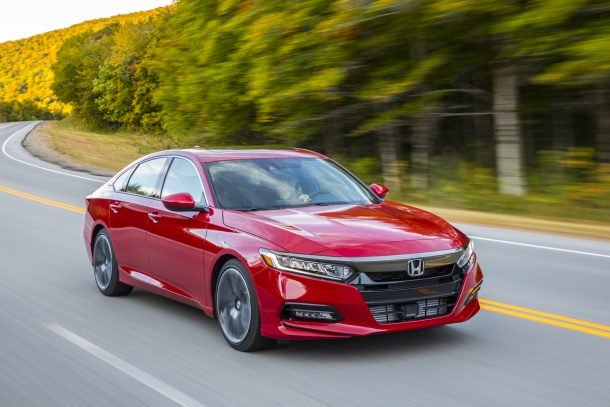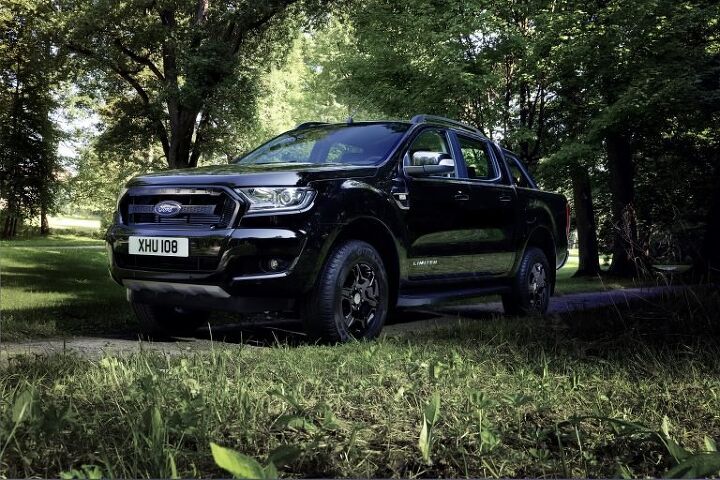#BuyingHabits
Gaining Traction: Americans Shun Two-wheel Drive In Record Numbers
Once upon a time, it was expected to find the driven wheels of a car aft of the rear seat. In this writer’s recollection, the coming of winter would see the addition of a few bags of concrete mix or sidewalk salt added to the trunk for extra traction. Most pickups, usually of the wholesome regular cab variety, boasted the same setup.
Eventually, front-wheel drive replaced RWD as the go-to way to put power down, while in the background four-wheel drive gathered steam.
Would it surprise you to learn that the majority of 2020 model-year vehicles sold in the U.S. thus far eschewed front- or rear-drive?
The Kids Aren't Alright
For roughly the last decade, we’ve heard the motoring media bemoan Millennials as the generation that snubbed driving. Their inability to find and hold jobs that paid as well as their parents’ did at the same stages of life, combined with elevated costs of living and crippling student debt load, negatively impacted their purchasing power. Still, this generation might be just the tip of an iceberg the industry’s about to careen into.
As it turns out, Generation Z might even be less interested in cars. In addition to facing similar financial constraints as their older peers, most of them aren’t even bothering to get a driver’s license.
Millennials Still Prefer Cars, Study Suggests
Ever since the Great Recession, Millennials have become the target of blame for every economic woe imaginable. They’re not saving their money, they’re not buying homes, they’re not making enough, they change jobs too frequently, they don’t know how to shop around, they’re crippled by debt, and they aren’t buying enough cars. Depending on where you get your news, they are frequently framed as economic imbeciles incapable of doing anything right.
Of course, the obvious counterpoint to those allegations involve the broader problem stagnating wages and a market established by their higher-earning forebears that they can’t seem to wrangle — but who has the time for nuance these days?
While we primarily care about the car buying angle, it’s worth mentioning that Millennials are different from their older counterparts. Still, we were surprised in how that fact manifested itself this week. Apparently, Millennials aren’t all that excited about utility vehicles. Despite SUVs and crossovers dominating the automotive landscape, younger folks are still choosing to buy cars.
Parents Are Buying Loads of Cars for Their Adult Children
It looks as though more parents are increasingly paying for the transportation needs of their (sometimes very old) children.
Thanks largely to abandoning the important job of parenthood, a Bank of America survey a discovered small portion of adults between age 23 and 37 are now able to put away legitimate savings. However, the prevalence of student debt, low-paying jobs, and an increased cost of living has left many to continue scrimping and saving. In fact, most Millennials under 24 had less than $1,000 in their savings accounts, with nearly half having no savings at all. The former was also true for older members of the same generation. On average, it’s presumed that Millennials are earning 20 percent less than their Boomer parents at the same stage in life — despite being better educated, overall.
That’s causing future issues for the automotive industry. When Bankrate surveyed Americans to get their financial priorities on record last month, 23 percent of respondents specified that student-loan debt directly influenced their decision to delay purchasing a new car. Considering both monthly payments are frequently set to the tune of hundreds of dollars, that would make a lot sense.
Shocked? One in Six Vehicles Bought Last Month Was a Compact, Mainstream Crossover
America knows what it wants, and the rest of the world — even those hard-to-reach places — is beginning to follow. Each week brings us news from far-flung locales pointing to increased demand for affordable crossover vehicles, if not the wholesale abandonment of certain car segments by certain automakers. Basically, the global auto industry in 2018 boils down to this: build a crossover, or become (or remain) a struggling niche company.
It’s hardly a new situation, but it’s hammered home with each passing month — as cars continue trickling out of every parking lot you pass and trunks begin appear on “Missing” posters at the post office.
Given that the compact crossover is arguably the most ubiquitous vehicle on the roads today, your author decided to look at just how prevalent their sales really are. Tossing aside premium or luxury offerings (a category we’ve tossed Buick into), this data dive focuses solely on the mainstream. The results? It’s grim stuff if you’re not the family type, so brace yourself.
Foreign Influence? Europe Tilts Even Further Into SUV Mania; Diesel Popularity Plummets
The continent that spawned microscopic postwar bubble cars and made the “city car” segment a thing is moving ever further away from its automotive past. European buyers, perhaps influenced by their American counterparts, are beginning to realize they truly can have it all, adjusting their buying habits accordingly.
Of course, by “all,” we mean all the cargo space.
Europeans Slowly Fall Victim to Pickup Truck Fever
Don’t worry, they aren’t suffering. As shown by the rise of pickup trucks as daily drivers and family haulers in North America, Europe’s burgeoning love affair with versatile light trucks isn’t hurting the owners. It’s traditional passengers car makers who must worry.
Sales stats arriving from the Continent show a marketplace that’s increasingly different from years gone by. The increasing popularity of SUVs and crossovers in the land of diesels, manual transmissions, and small displacements is nothing new, but the exploding popularity of honest-to-God pickups is.
Scientists Reveal What We Already Knew: Economy Cars and Gas Guzzlers Love Each Other
Picture a suburban street in an average middle class neighborhood. In each driveway sits two vehicles, as tradition states no modern American suburban family can make do with just one. Think about those two vehicles for a minute now.
Are they evenly matched? In other words, are they the same size? Do they fulfill the same requirements laid out by a single segment? Doubtful, and your mind’s eye already made this clear. One’s a Safari or Caprice wagon, the other’s a Datsun 210. One’s a Corolla, the other, a Suburban. A Focus and an F-150, and so on.
Does owning an economy car compel new car buyers to splurge when new-car buying time rolls around? Logic, and now science, says yes.























Recent Comments